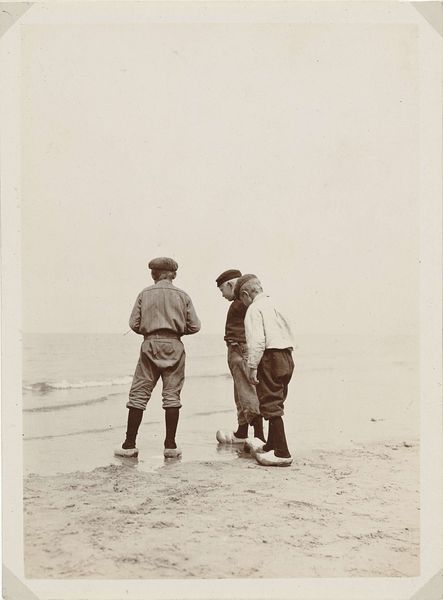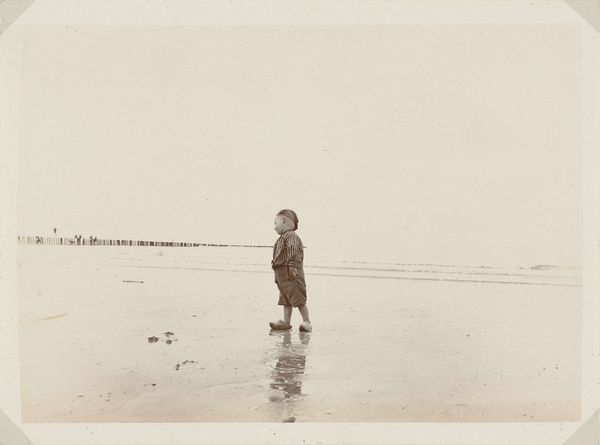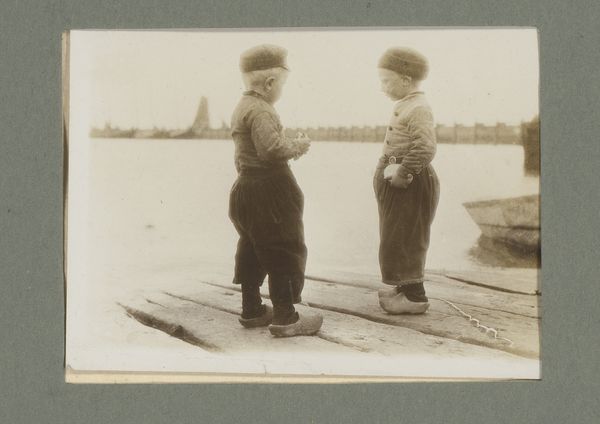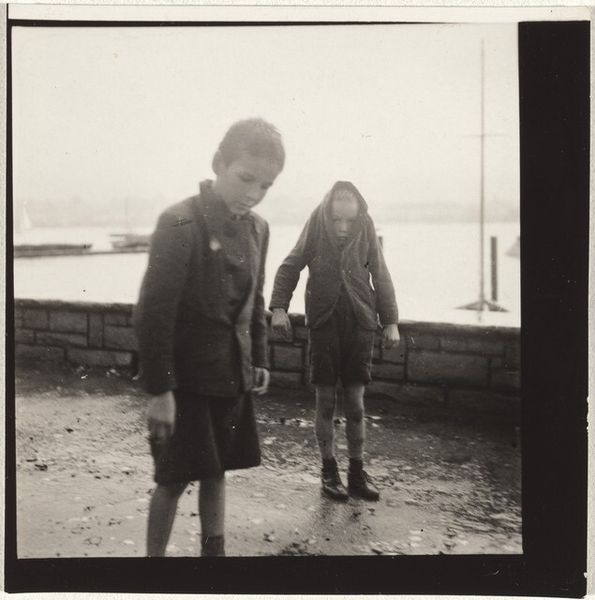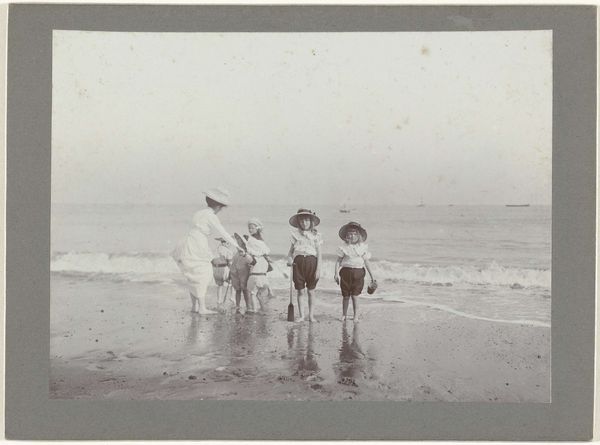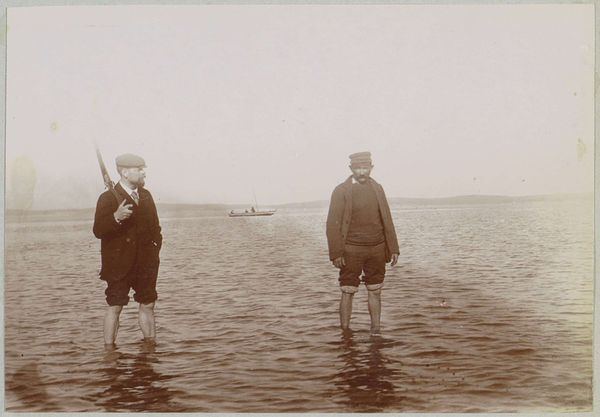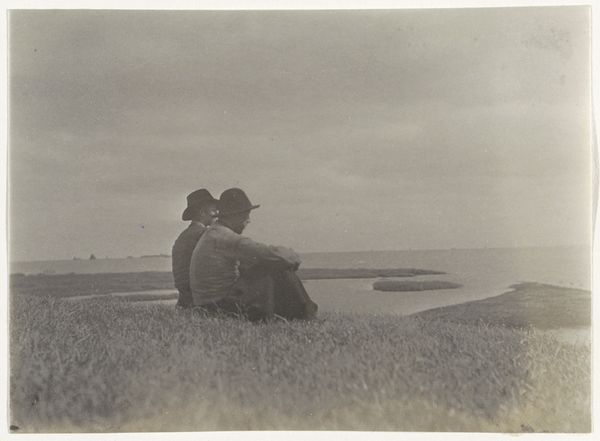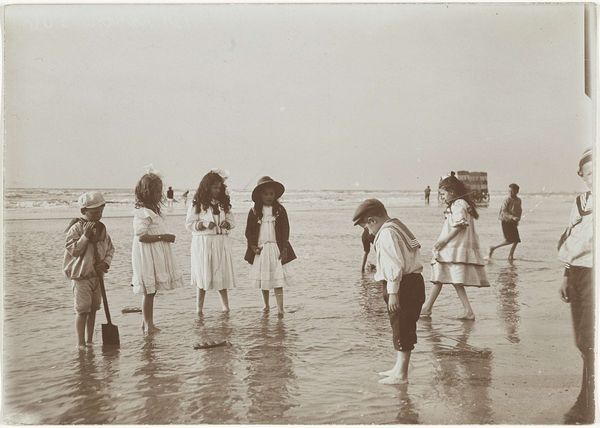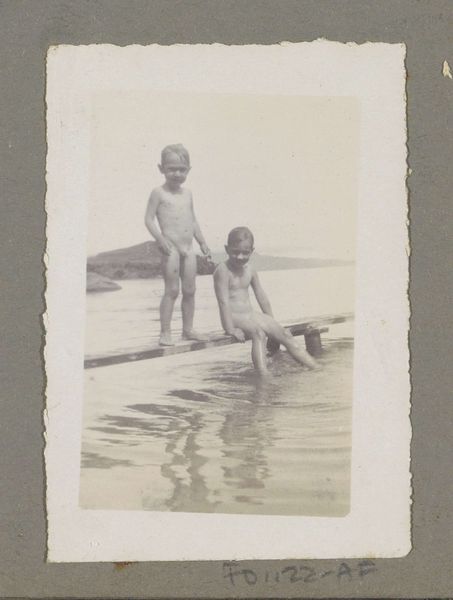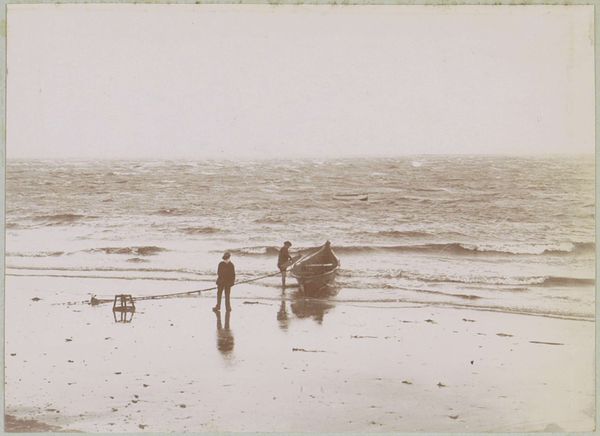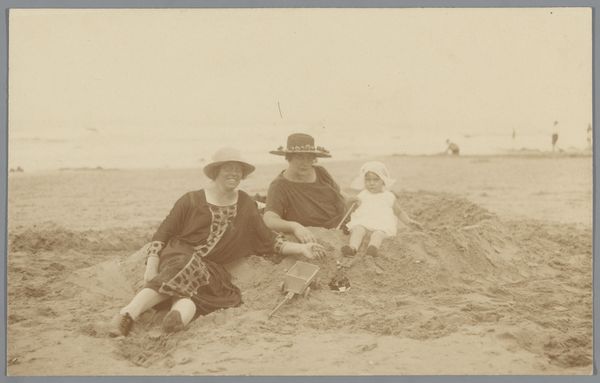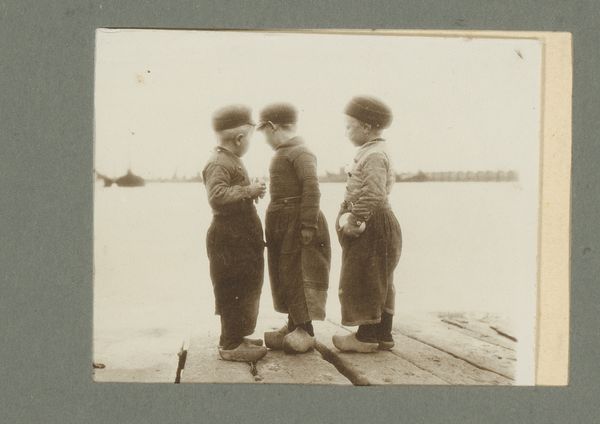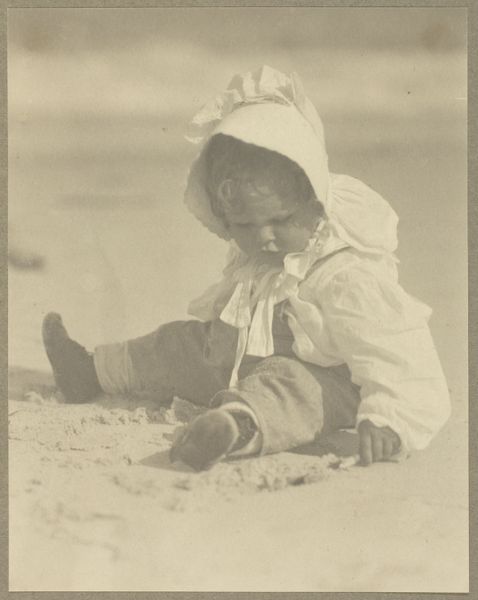
Dimensions: height 152 mm, width 109 mm
Copyright: Rijks Museum: Open Domain
Editor: Here we have "Two Boys on the Beach at Scheveningen," a gelatin silver print from 1904. There’s something melancholic about the tones, almost like a memory fading. What strikes you about it? Curator: It’s a beautiful piece for examining the intersections of childhood, labor, and coastal communities in early 20th-century Netherlands. Note the wooden shoes. These weren't just fashion statements; they were practical footwear for working-class children, especially in fishing communities like Scheveningen. Editor: So, beyond a simple snapshot of two boys, there’s a commentary? Curator: Absolutely. The image subtly highlights the blurred lines between youth and the responsibilities thrust upon them. How did the burgeoning fishing industry shape the lives, and indeed, the identities, of children like these? What about gender roles? We don’t know what their lives look like but it is not a stretch to image some realities. The boat in the background isn’t just a scenic element. Editor: That makes me reconsider the mood entirely. It's not just nostalgic; it's questioning. Do you think that perspective was intentional on the photographer’s part? Curator: Intention is difficult to determine. But by examining social conditions and the symbolism embedded within the image, we can build narratives around representation, agency, and the complex realities of the depicted subjects. Editor: It's fascinating how much history can be packed into one photograph. I'll never look at old photographs the same way. Curator: Indeed. Art gives us entry points to larger narratives.
Comments
No comments
Be the first to comment and join the conversation on the ultimate creative platform.
